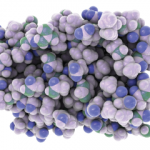“It seems that engagement of the endosomal, nucleic-acid sensing TLRs, affects not only the classical anti-chromatin and anti-DNA antibodies in lupus, but also the vast majority of the broad spectrum of autoantibodies seen in lupus,” said Dr. Theofilopoulos. “The question perplexing many investigators is that we did not know why there was such a diversity. It seems that it’s all based on the recognition of nucleic acids.”
More mutant mice were bred to examine the role of pDCs in lupus pathogenesis including one with a deletion of the IRF-8 gene, an interferon-inducible protein with profound effects on the innate and adaptive immune responses. Mice without the IRF-8 gene had reduced pDCs and disease.7 Still, IRF-8 deletion also affected development of other dendritic cells too, so the role of pDCs was still unclear. To clarify it, researchers used other mutations, including a nonfunctional form of SLC15A4 (a histidine/peptide transporter), which interferes with the production of type 1 interferons and proinflammatory cytokines by pDCs. When the SLC15A4 molecule is mutated, there is no signaling by the endosomal TLRs and mice exhibit reduced disease, he said.
“The exact function of SLC15a4 has not been fully defined. It seems that it’s not only expressed on pDCs, but also on B cells and dendritic cells,” he said. “On the basis of all of these findings, we hypothesize that lupus proceeds in two phases.
“The first phase is the uptake of nucleic acids or microparticles, in particular pDCs and perhaps DCs, the production of type 1 interferons, upregulation of major histocompatibility class II molecules, self-peptide presentation and engagement of T cells and B cells bearing proper receptors.
“This leads to the production of autoantibodies and immune complexes, which is the second or amplification phase, where such immune complexes are secondarily taken up by pDCs, DCs and B cells, and thus, perpetuate and propagate the disease process.”8
Pathogenic Effects
Questions about the role of TLRs and interferons in lupus remain unanswered. Are all TLRs equally pathogenic, and are all these pathogenic effects mediated by type 1 interferons?
“Also, what are the mechanisms by which we normally avoid the engagement of our own nucleic acid-sensing TLRs, and how are these processes subverted?” asked Dr. Theofilopoulos. The role of cytosolic nucleic acid sensors, such as RIG-I and MDA-5, compared with TLR sensors is still unclear. “And finally, how will all of these studies lead to the development of novel therapies for lupus and other diseases?”


